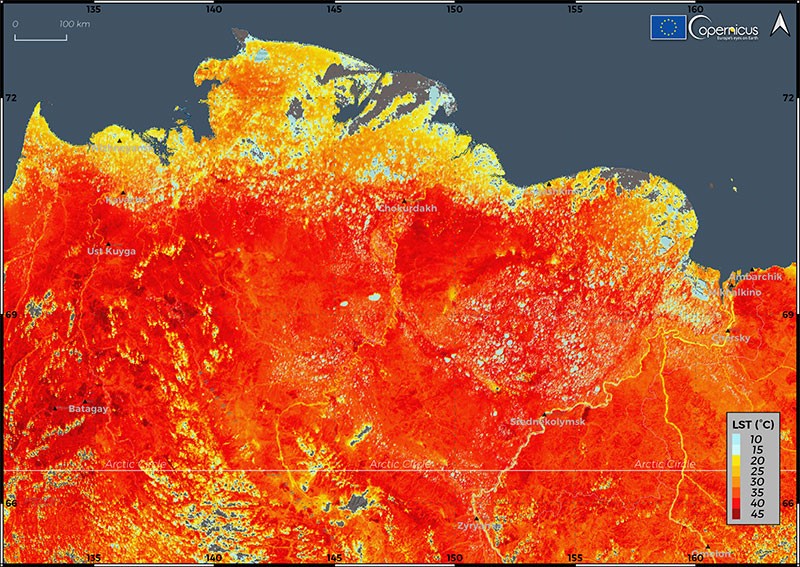Video 1: in ‘Breaking Boundaries: The Science of Our Planet’, Sir David Attenborough succinctly explains planetary boundaries and the tipping points that take us beyond these boundaries. This is a short version of the full documentary of the same name, available on Netflix. Video 7 below is a more in-depth presentation of Earth’s operating manual, the research behind the findings, and the name of the new epoch: the Anthropocene.
Video 2: Dr Tim Naish from Wellington University explains what Antarctic climate scientists are finding out and why they are so concerned. Antarctica may be melting faster than current models use to predict sea level rise, and the implications are potentially disastrous. Not only will sea levels rise increasing this century, but if the West Antarctic Ice Sheet is destabilized, the process could be continuous and irreversible for centuries. (October 2022)
- Scientific evidence that it contributes to regulate the state of the climate system.
- Scientific evidence of multiple stable states, for example, either frozen ice sheet or liquefied ice. Another example is either a rainforest or savannah.
What separates these states are the interactions and feedbacks between non-negotiable biological chemical physical properties such as the melting point of ice. For example, a healthy ice sheet with very high altitude that’s very cold. If that starts melting, it gets lower and lower altitude, so you get a self-amplifying feedback, because the lower the altitude, the warmer it gets, and the darker the surface—because it is liquefied—the albedo shifts from reflecting to absorbing yet more heat.” – Prof. Johan Rockstron (Video 8)
Tipping points shown in Fig. 1 have global physical, economic, and social impacts outside the scope of this website. For more detailed information see Carbon Brief’s website, Video 7 below, and this 2023 comprehensive paper (if this is inaccessible, download the pre-published PDF: ‘Mechanisms and impacts of climate tipping elements‘).
We may be able to prevent some tipping points if we can reverse rising temperatures by drawing down excessive carbon from the atmosphere. The fastest and most cost-effective way to achieve this is by restoring natural ecosystems, which will bring the collateral benefits of healthy ecosystem services as well as a livable climate.
One of the characteristics of tipping points is that once a system has been tipped into a new state, it can’t be returned to its original state simply by undoing the even that caused it to tip. For example, once global average temperatures pass 2°C, according to the IPCC ocean acidification will persist for tens of thousands of years. Even now there is no practical way to reverse ocean acidification.
“Observations from across the Amazon suggest that CO2-driven accelerations of tree growth may have contributed to increasing tree mortality rates (trees grow faster but also die earlier), which could eventually neutralize the forest carbon sink in the coming decades.” – Flores et al, 2024
Video 3: The Amazon rainforest may have passed the tipping point that will flip it into a savannah.
“The only reason why the IPCC provides the world with the remaining carbon budget of roughly 4 – 500 gigatonnes, is that the models assume that the carbon sink capacity of intact nature will continue. So not only are we assuming that biological systems will not cross tipping points, we’re also assuming that the stocks of carbon in forests in soils, in wetlands and permafrost, remain reasonably intact over the next 50 years. That is quite an optimistic assumption because it means we need to invest in conserving the remaining intact ecosystems.” – Prof. Johan Rockström, COP 26, November 2021 (Video 4)
“The central Congo peatlands lie close to a “tipping point” where billions of tonnes of carbon could be released into the atmosphere.” – Prof. Simon Lewis in Carbon Brief
Video 4: COP26 – Emerging climate risks.
Tipping points covered in more depth on this website:
Biodiversity loss Aotearoa:
Threats are from introduced pest plants and animals that thrive in a changing climate, ongoing agricultural expansion, pollutants entering waterways, demands for reliable water for irrigation, bulldozing marine ecosystems through bottom trawling, and an Emissions Trading Scheme that financially incentivises monoculture radiata pine plantations over the protection and restoration of biodiverse native ecosystems. Once tipping points for some native ecosystems and species are reached, the ecosystem services they provided (including flood mitigation, coastal defenses against rising sea levels, and long term carbon sequestration) are, along with many endangered species, gone forever.
“Since the 2012…over a hundred thousand hectares of true land-use change [has been] going on around wetlands, scrub being cleared, and dairy land-use intensification.” – Landcare Research, 2020
“Even the most egregious offences—including a dam built on a wetland, clearance of a nationally endangered form of kānuka, and aerial poisoning of swathes of regenerating native bush—often prompted little more than a warning from authorities.” – Charlie Mitchell, Stuff, 2020
The melting cryosphere:
“If current rates of surface lowering persist, the entire Thwaites Eastern Ice Shelf will unpin from the seafloor in less than a decade, despite our finding from airborne radar data that the seafloor underneath the pinning point is about 200m shallower than previously reported. – Wild et al, 2021.
“Having two caps of a permanent ice in the Arctic and Antarctica is the very precondition for the planet to stay in a state that has enabled us to develop civilizations as we know it. Whether it’s a small glacier or whether we’re talking about Greenland, they all add together to this fantastic capacity of cooling the planet.
Icecaps and glaciers are reflecting back 90 to 95% of incoming heat from the sun. When these ice sheets start melting, you can come to a point where the ice sheets tip over from being self-cooling to becoming self-warming and that is the most dramatic tipping point in their system. A tipping point is the point beyond which a change becomes irreversible. So in the current climate, Greenland is already beyond its threshold where it’s now losing 10,000 cubic metres of ice per second. That loss rate will only continue as the climate heats up.
So is Greenland lost? Evidently, it is.
The drama here is that one characteristic of tipping points is that once you press the on button you cannot stop it. It takes over. It’s too late. It’s not like you could say, ‘Oops now I realise I didn’t want to melt the Greenland ice sheet. Let’s back off.’ Then it’s too late.
The important point to make here is that everything in the Earth system is connected. When one part of the climate system crosses its tipping point, then that might make it more likely for other parts of the system to also cross their critical thresholds. So you can think of this in terms of dominoes. If you tip one of them over, then this might lead to cascading effect. When we cross tipping points, we unleash irreversible changes that would mean that the planet who go from are best friend, where it dampens and reduces the stress, sucking out carbon dioxide and taking up heat-absorbing impacts, and tipping over to a point where it could self-reinforce warming. – Prof. Jason Box in Breaking Boundaries: The Science of our Planet (Video 1).
Video 5: At COP26, over 100 countries including Aotearoa signed a global pledge to cut methane emissions 30% below 2020 levels by 2030 in recognition of the serious threat we face today. “Many scientists are convinced there is a real threat of a methane bomb or methane outbreak of very large magnitude sufficient to perhaps cause an immediate warming of at least one degree.”
Video 6: The ice sheet near Qaanaaq Greenland that they would normally sled across is covered in vast meltwater lakes due to extreme surface warming (17°C) in June 2019. Meltwater eventually drains into the ocean, contributing to rising sea levels and disrupting oceanic currents. – Steffen M. Olsen, Danish Meteorological Institute.
Video 7: This video starts 17 minutes into the 42-minute presentation from Earth Systems scientist Professor Will Steffen (Climate Council of Australia, Australian National University). The full Youtube video is an ideal starting point for students to understand how Earth has operated over the past 4.6 billion years, the impacts of climate change, and the naming of the Anthropocene.
Video 8: How close are we to climate tipping points? NY Times event held in conjunction with COP27, November 2022. The most recent research (2023) paper (open access) is here .




